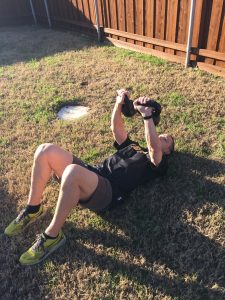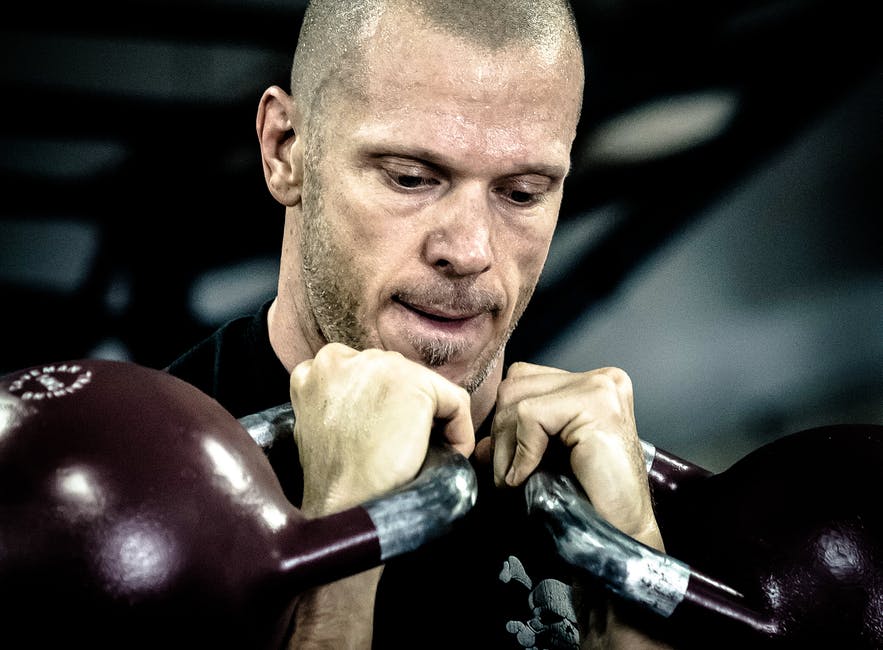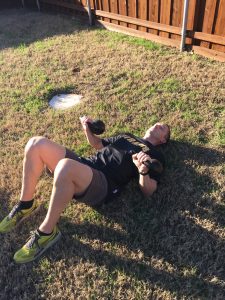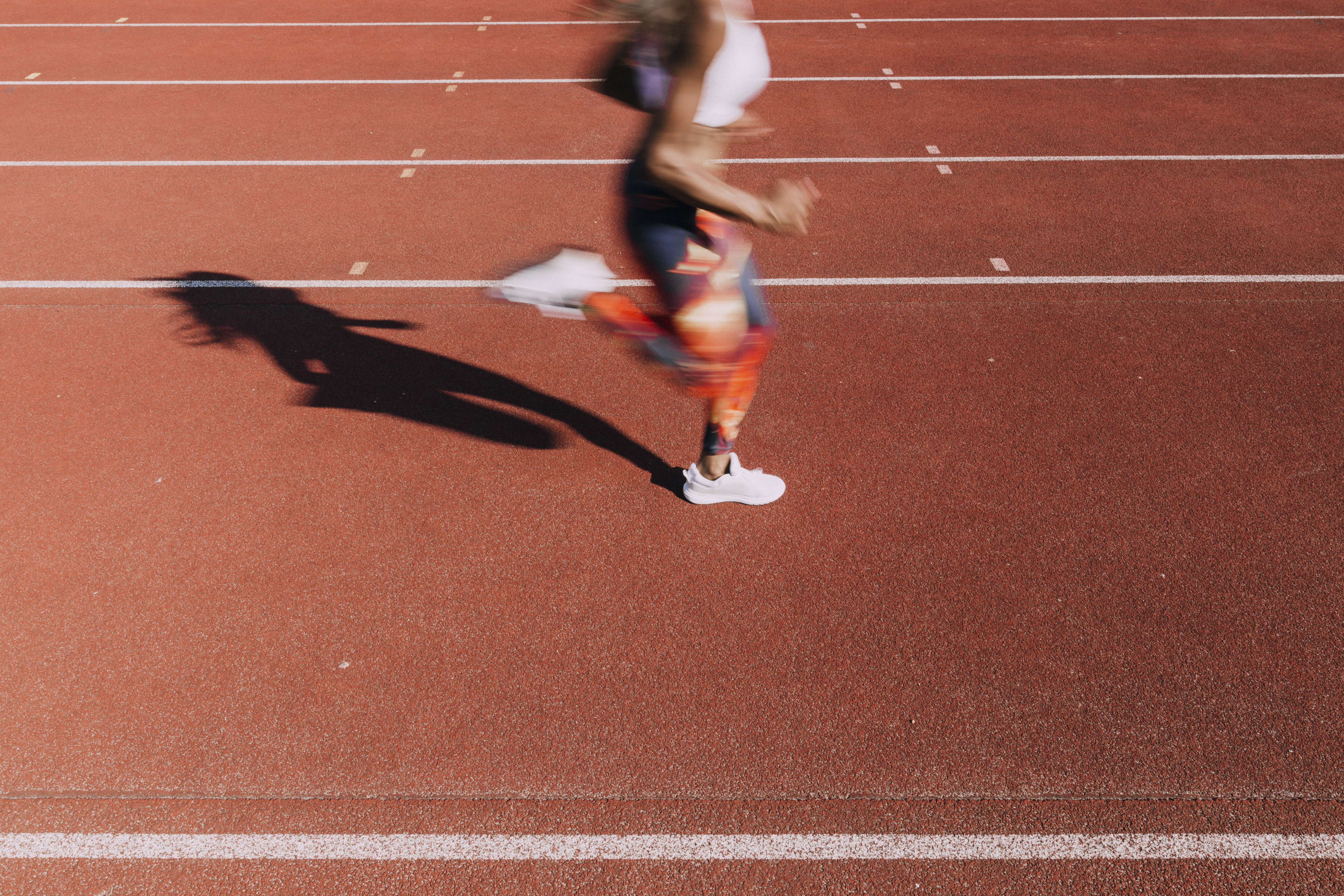There are a lot of exercises for upper body strength that we can use in an athletic setting. This week we’re going to introduce the kettlebell floor press as a great supplemental exercise for upper body strength.
To begin this exercise, sit on the floor. I like to have the athlete sit so that a kettlebell is just outside each hip. Grip the kettlebell handles and rest the kettlebells on the thighs. From here, lie back so that the feet, hips, shoulders, and head are in contact with the ground. The upper arms should be positioned so that the kettlebells are even with the lower half of the chest with the triceps resting on the ground.
From this position, press the kettlebells up and slightly in towards the midline of the body. Lower until the triceps touch the ground. Repeat until the desired number of repetitions have been performed.

Things to avoid with this exercise. First, avoid bounding the arms off the ground when lowering the kettlebells. If necessary, a pause at the bottom can be added to avoid this. Second, avoid clanging the kettlebells together at the top of the movement. While this sounds hard core, it also takes the stress off the muscles and can lead to more wear and tear on the kettlebells. Third, the hips need to stay on the ground. Fourth, keep the wrists neutral.
There are several things that I like about this exercise. First, because of the limited range of motion it’s a great exercise for athletes with shoulder concerns. This is something I would use with pitchers and other overhead athletes. Second, it’s a good supplemental exercise for developing arm strength. Third, the unilateral nature of the kettlebells means that both sides of the body have to be developed. Fourth, this is a great supplemental exercise to help with bench press strength especially if athletes are having challenges with the lock out.
Now, there are some drawbacks. First, the range of motion is limited. I know I said this was a positive, but it also means that the muscles of the chest and shoulder aren’t going to be developed to the extent that they would with a dumbbell or barbell bench press, for example. Second, and this is important, you need to understand that this is going to require a lot of equipment to be used in a large team strength and conditioning setting. If we have 20-100 athletes training at one time, then it’s going to be difficult to have enough kettlebells at the correct weights to use effectively.
For me this is a supplemental exercise, but with a Westside-type system it might be a main exercise for a few weeks. Below, I’m going to show how to use this exercise in both settings.
The table below shows using this exercise as a supplemental exercise:
Day One (maximal strength focus):
Back squats, 3×4-8×80-90%
Romanian deadlifts, 3×4-8
Bench press, 3×4-8×80-90%
Bent-over rows, 3×4-8
Kettlebell standing press, 3×4-8
Day Two (power focus):
Snatch high pulls, 3×3-6×60-70%
Power clean, 3×3-6×60-70%
Clean pulls, 3×3-6×60-70%
Day Three (upper body):
Incline press, 3×8-12×70-80%
Kettlebell floor press, 3×8-12
Pull-ups, 3×8-12
3-in-1 shoulders, 3×10 each
Superset: Biceps/triceps, 3×8-12 each
Day Four (lower body):
Front squats, 3×8-12×70-80%
Lunges, 3×8-12 each leg
Good mornings, 3×12-15
Reverse hyperetensions, 3×12-15
Below is an example of using it as a main exercise:
Day One (maximal strength focus):
Back squats, 3×4-8×80-90%
Romanian deadlifts, 3×4-8
Kettlebell floor press, 3×4-8
Bent-over rows, 3×4-8
Kettlebell standing press, 3×4-8
Day Two (power focus):
Snatch high pulls, 3×3-6×60-70%
Power clean, 3×3-6×60-70%
Clean pulls, 3×3-6×60-70%
Day Three (upper body):
Incline press, 3×8-12×70-80%
Dips, 3×8-12
Pull-ups, 3×8-12
3-in-1 shoulders, 3×10 each
Superset: Biceps/triceps, 3×8-12 each
Day Four (lower body):
Front squats, 3×8-12×70-80%
Lunges, 3×8-12 each leg
Good mornings, 3×12-15
Reverse hyperetensions, 3×12-15
This exercise can also be done exercising one arm at a time. For this, we’d begin with the kettlebell in the right hand (the left hand will be empty). The desired number of repetitions are performed. Then the athlete switches hands. This variation is actually a little more challenging for the athlete’s core than it sounds!
(Revised 5/27/21)



